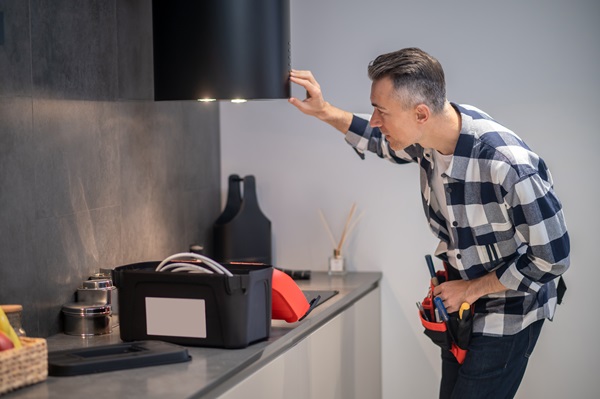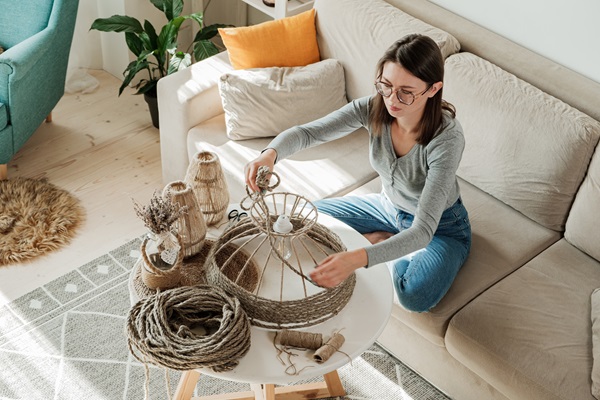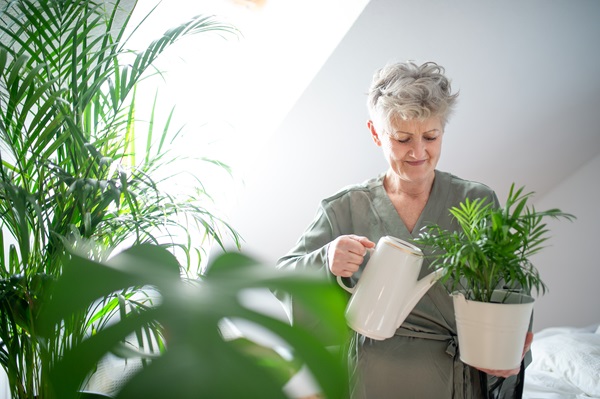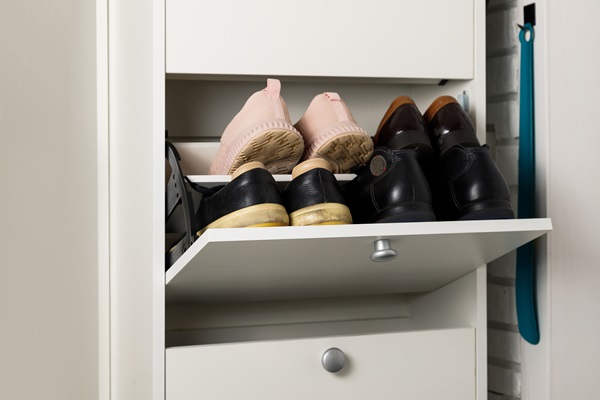Transforming a living space into a personal haven doesn’t have to be a daunting task. Easy interior design ideas can effectively revitalize any room, bringing fresh energy and style with minimal effort. This guide offers practical and accessible tips for anyone looking to enhance their home’s aesthetics. From understanding the fundamentals of space to selecting the perfect color palette and furnishings, these suggestions cater to various tastes and needs. Whether one is redecorating a single room or considering a complete home makeover, these straightforward design strategies can make a significant impact.
Contents
Understanding Your Space

The journey to a well-designed room begins with a clear understanding of its purpose and layout. A room’s function dictates its design needs – a cozy bedroom requires different elements than a lively living room or a functional kitchen. Start by assessing the primary activities that will take place in the room. This approach ensures the space is not just aesthetically pleasing but also practical and conducive to its intended use. Additionally, consider the room’s dimensions and shape. Acknowledging the physical constraints and potential of the space is crucial in planning an effective design layout.
Observing natural light patterns throughout the day can also influence design choices. Rooms bathed in sunlight offer different possibilities than those with limited natural light. Light influences how colors and textures appear and should be a key consideration in the selection process. Furthermore, recognizing existing architectural elements, like fireplaces or built-in shelves, can inspire unique design ideas that accentuate these features. With a comprehensive understanding of the space, one can embark on a design journey that is both practical and aesthetically rewarding.
Choosing a Color Scheme

Colors have the power to transform a room, setting its mood and atmosphere. The first step in selecting a color scheme is to decide the desired emotional tone. Warm colors can create a cozy, inviting environment, while cool tones might evoke calmness and serenity. For a harmonious look, consider using a color wheel to find complementary colors. Alternatively, a monochromatic scheme with varying shades of the same color can produce a subtle and sophisticated ambiance. It’s crucial to test paint colors in different lighting conditions to ensure they produce the desired effect throughout the day.
In addition to wall colors, consider how furniture, fabrics, and accessories will interact with the chosen palette. A balanced approach is key; too much of one color can overwhelm, while too little may fail to make an impact. Textiles and decor offer opportunities to introduce accent colors that can add depth and interest to a room. Remember, color preferences are subjective, so it’s essential to choose a palette that resonates personally and creates a space where one feels comfortable and at home.
Furniture Selection

Selecting the right furniture is crucial in defining the character and functionality of a room. Begin by identifying the essential pieces needed for the room’s purpose. For instance, a comfortable sofa and a coffee table might be indispensable in a living room, while a bedroom may require a bed and wardrobe first and foremost. When choosing these items, consider both their aesthetic appeal and practicality. Furniture should complement the overall design theme and fit comfortably within the space, allowing for easy movement and flow.
The size and scale of furniture are equally important. Oversized pieces can make a room feel cramped, while furniture that is too small can seem lost in a larger space. Aim for a balanced composition by mixing different sizes and heights. This variety can create a dynamic yet harmonious look. Additionally, consider the furniture’s material and texture, as these elements add visual interest and contribute to the room’s overall atmosphere. By thoughtfully selecting each piece, one can craft a space that is both stylish and functional.
Lighting Essentials

Lighting plays a pivotal role in interior design, influencing both the ambiance and functionality of a space. Start by considering the room’s natural light and how it changes throughout the day. This understanding can guide the placement of artificial lighting to ensure the room is well-lit at all times. Incorporating a mix of ambient, task, and accent lighting can create a layered effect that enhances the room’s aesthetic and practicality. Ambient lighting provides overall illumination, task lighting focuses on specific areas for activities like reading, and accent lighting highlights architectural features or artwork.
The choice of light fixtures can also significantly impact the room’s design. Options range from statement chandeliers to subtle recessed lights, each contributing differently to the room’s character. Consider the style and scale of the fixtures in relation to the space and other design elements. Dimmer switches offer flexibility, allowing for adjustments in brightness to suit different moods and occasions. Thoughtful lighting design not only illuminates a space but also elevates its design, creating a warm and inviting atmosphere.
Accessorizing Your Space

Accessories are the finishing touches that bring personality and depth to a room. They are the elements that reflect individual style and transform a space from functional to personal. Start by selecting key pieces that resonate with the overall design theme, such as cushions, rugs, or artwork. These items should complement the color scheme and add visual interest through textures and patterns. When accessorizing, consider the balance of the room; too many items can make a space feel cluttered, while too few may leave it feeling sparse. The key is to strike a harmonious balance that enhances the room’s aesthetic without overwhelming it.
Artwork and photographs can infuse a space with individuality and charm. When hanging art, consider the scale and placement in relation to the room’s layout and furniture. Grouping smaller pieces together can create a gallery-like effect, while a single large piece can serve as a focal point. Additionally, incorporating elements from nature, such as plants or natural fibers, can add a refreshing and calming touch to the decor. Remember, accessorizing is an opportunity to express creativity and personality, so choose pieces that resonate with personal tastes and make the space uniquely yours.
DIY Decor Ideas

DIY decor offers a unique opportunity to personalize a space while engaging in creative and rewarding projects. For those new to DIY, start with simple projects that require minimal materials and effort. This could include creating custom photo frames, painting a unique piece of wall art, or crafting handmade throw pillows. These projects add a personal touch to the room and allow for customization to perfectly match the existing decor. DIY decor can also be a cost-effective way to update a room, offering a sense of accomplishment that comes with creating something by hand.
For more advanced DIY enthusiasts, larger projects like refurbishing old furniture or building custom shelving can provide a significant transformation to the space. These projects allow for greater creativity and can be tailored to meet specific needs and preferences. Upcycling items, such as turning an old ladder into a bookshelf or repurposing jars into light fixtures, adds unique elements to the decor and promotes sustainability. Remember, the goal of DIY decor is to add personal and unique touches to a home, so be bold in experimenting with different ideas and materials.
Incorporating Plants

Incorporating plants into interior design not only enhances the aesthetic appeal of a room but also brings numerous health benefits, such as improved air quality and increased feelings of well-being. When selecting plants, consider the room’s lighting conditions and choose species that thrive in that environment. Low-light spaces may benefit from ferns or snake plants, while sunnier rooms can accommodate a wider variety of plants like succulents or flowering species. It’s also important to consider the maintenance level of the plants; opt for low-maintenance varieties if not accustomed to regular plant care.
Beyond choosing the right plants, consider how they are displayed. Creative planters and stands can add to the room’s decor while allowing for optimal plant growth. Hanging planters can save floor space and add an interesting visual element, especially in smaller rooms. Grouping plants of various sizes and types can create a mini indoor garden, adding a lush, vibrant touch to the space. Additionally, consider incorporating plants into unexpected areas like bathrooms or kitchens, where they can add a fresh and lively element.
Smart Storage Solutions

Effective storage solutions are vital to maintaining a clutter-free and organized space, especially in areas with limited room. The first step in creating smart storage is to assess the items that need storing and determine how frequently they are used. This assessment helps in designing storage that is both functional and accessible. Consider multifunctional furniture, such as ottomans with storage, beds with built-in drawers, or coffee tables with shelves. These pieces offer a dual purpose, maximizing space efficiency without compromising on style. Additionally, vertical storage options like wall-mounted shelves or tall bookcases can make the most of available wall space, keeping the floor area clear.
Beyond traditional storage options, there are numerous creative ways to organize and store items. For example, using decorative baskets or boxes can add to the room’s decor while keeping smaller items neatly tucked away. Custom-built solutions, like under-stair drawers or built-in cabinets, can utilize otherwise wasted spaces. In closets, consider organizers or dividers to keep clothes and accessories in order. The key is to create storage solutions that blend seamlessly with the room’s design, ensuring that functionality and aesthetics go hand in hand. Remember, a well-organized space looks better and creates a more peaceful and efficient living environment.
Discover Your Space’s Potential
These easy interior design ideas offer a starting point for transforming any room into a space that reflects personal style and meets practical needs. Whether it’s through clever use of color, thoughtful furniture selection, innovative lighting, or unique accessories, each change contributes to creating a more enjoyable and personalized home. So next time you’re looking to refresh your living space, think beyond just the visual appeal and consider how these simple design principles can make a big difference in creating a comfortable and functional home.


